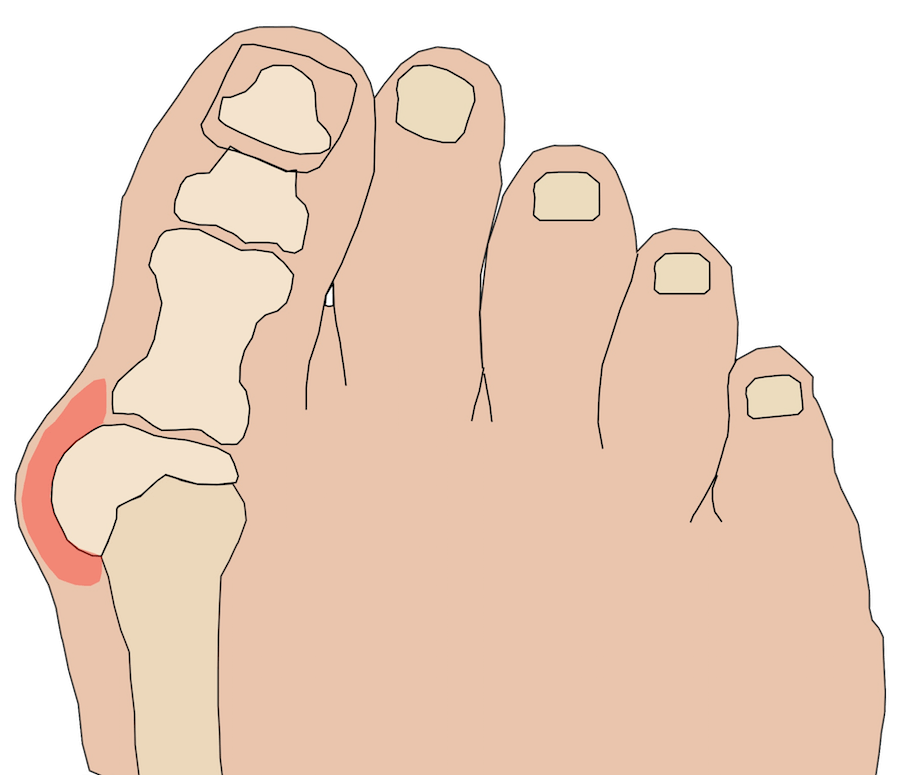What Is a Bunion?
Peter Nossiter

What is a bunion?...
The term bunion refers to an abnormal angulation of the great toe joint, which tends to become enlarged and press into the inner side of the shoe. The cause of a bunion is quite complex, but the main contributing factor is thought to be linked to the foot posture of the patient. Tight fitting shoes can, however, aggravate the condition during its development. In addition, having a first toe which shorter than the others, or having hyper mobile feet, can make you much more susceptible to the formation of bunions. There is an alternate bunion known as a ‘Tailor’s bunion’, or a ‘bunionette’. This condition arises as a result of inflammation of the fifth metatarsal bone at the base of the little toe and may be similarly exacerbated by having a short 5th toe, or a poor foot posture.
There are Three Stages of Bunion Development
1.Primary Stage:
Usually occurs from adolescents up to the age of 25 years. A primary stage bunion presents as a slight bump.
2. Secondary Stage
Occurs generally between the ages of 25 and 55 years. The 1st metatarsal head enlarges and the big toe moves to cause pressure on the 2nd toe. Callus can form on both sides of the big toe and also on the 2nd toe where pressures start to build up.
Foot posture is critical at this stage. Orthotic intervention now can correct poor foot posture to slow down progression of the bunion formation.
3. Tertiary Stage
Without orthotic intervention, the bunion will eventually move into the Tertiary Stage, in which an overlapping of the hallux occurs either above or below the 2nd toe. Your shoes will become uncomfortable, and it is hard to find shoes to accommodate the bump.
This stage is very difficult to treat. You may need to consult an orthopaedic surgeon to surgically correct the bunion deformity. Even after surgery, you will need to have orthotics prescribed to treat the underlying biomechanical condition. Orthotics are essential to realign and support the foot and to prevent the reoccurrence of the bunion.
Treating bunions with orthotic therapy will realign the foot, controlling excessive flattening of the arch and taking pressure off the bunion joint. They should also slow down the progression to enable you to avoid surgery.
To book an appointment with a podiatrist on bunion advice and treatment, click here.


